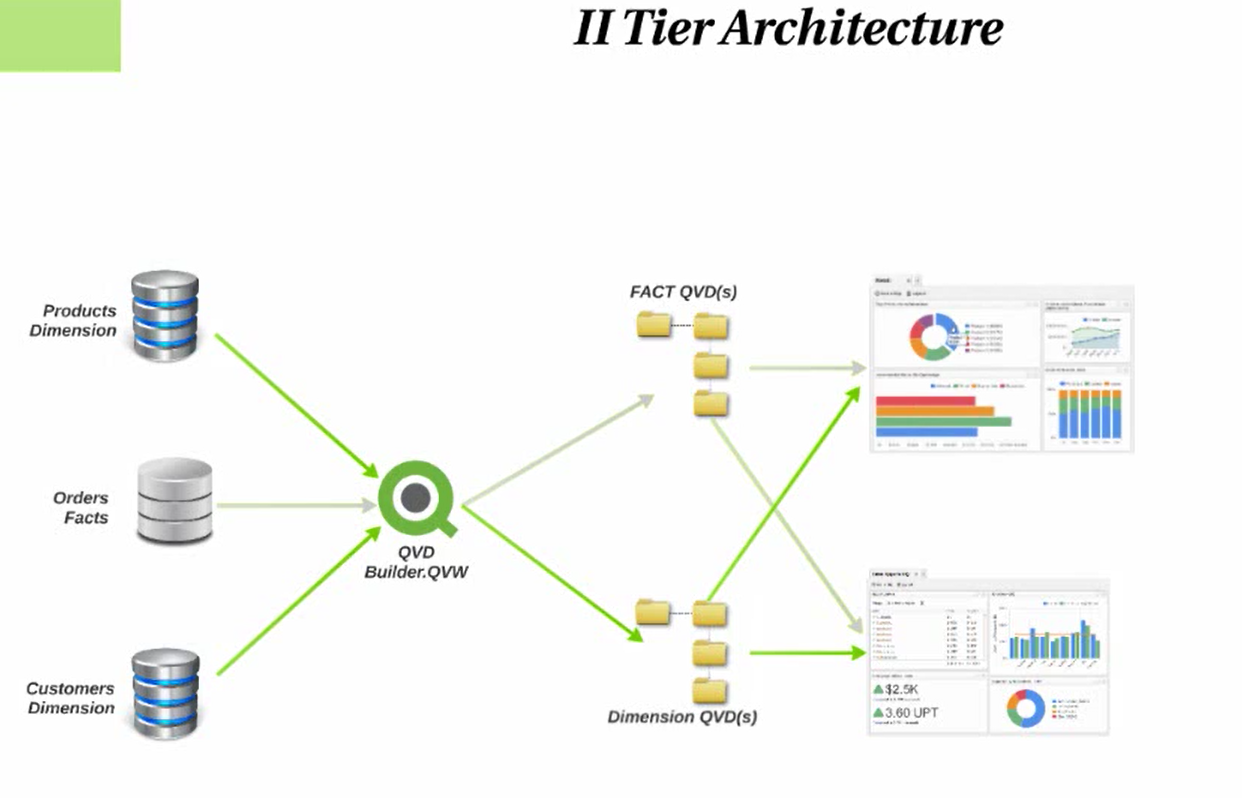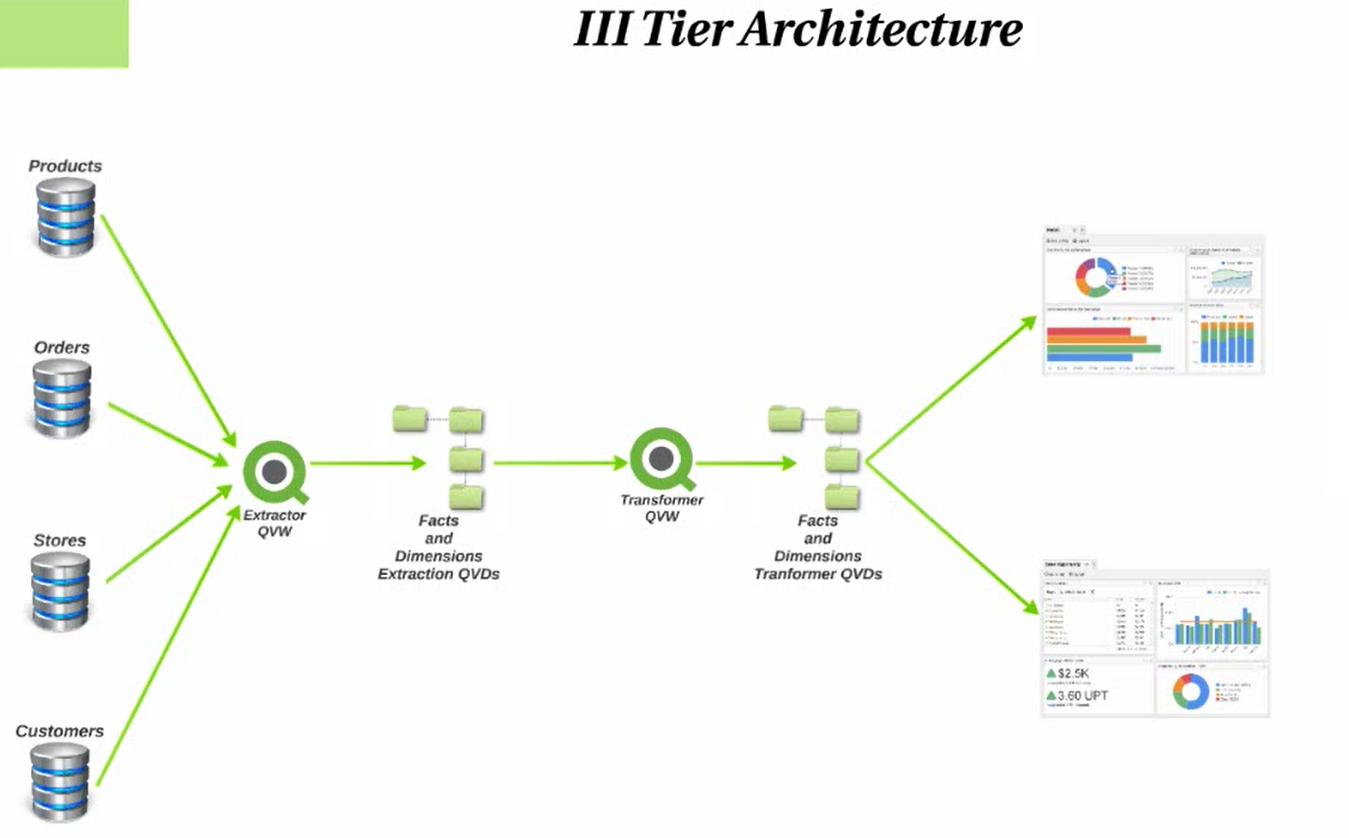Unlock a world of possibilities! Login now and discover the exclusive benefits awaiting you.
- Qlik Community
- :
- All Forums
- :
- QlikView App Dev
- :
- Qvd's
- Subscribe to RSS Feed
- Mark Topic as New
- Mark Topic as Read
- Float this Topic for Current User
- Bookmark
- Subscribe
- Mute
- Printer Friendly Page
- Mark as New
- Bookmark
- Subscribe
- Mute
- Subscribe to RSS Feed
- Permalink
- Report Inappropriate Content
Qvd's
Hi Experts,
I know the 1st point in below table.
Can any one explain me the below 2nd and 3rd points in qlikview.
| 1) Only one level , no store of QVD file reload directly from the source |
| 2) Two-level store on QVD file parameter of the phases of the ETL. |
3) Three levels of QVD files store , introduction of a management framework ETL. |
Regards,
Mahesh
- Mark as New
- Bookmark
- Subscribe
- Mute
- Subscribe to RSS Feed
- Permalink
- Report Inappropriate Content
2) The generated QVDs are used to reduce the application reload time and the transformation and extract part of ETL. By doing so, if you need to reload some specific part of the process (E / T or final application) you can reload only part of it, instead of doing the entire process as in 1).
3) Seems like 2) but gives you more control over what you're treating, depend on your approach really.
Would be something like:
Source ------> QVD extracted -----> Transformation QVDs -------> Treated QVDS ------> Application.
Depends on how much control you need and what your structure would be like,
Hope it helps and more people can add to it.
Felipe.
- Mark as New
- Bookmark
- Subscribe
- Mute
- Subscribe to RSS Feed
- Permalink
- Report Inappropriate Content
Thanks Felipe,
I am waiting for other people response on this.
Mahesh
- Mark as New
- Bookmark
- Subscribe
- Mute
- Subscribe to RSS Feed
- Permalink
- Report Inappropriate Content
Hi All,
I am expecting more response from others.
- Mahesh
- Mark as New
- Bookmark
- Subscribe
- Mute
- Subscribe to RSS Feed
- Permalink
- Report Inappropriate Content
I Tier Architecture.
Pros:
1.Speed of development
2.Faster reload time
Cons:
1.Increased network traffic
2.Potentially long reload times
3.Data consistency

II Tier Architecture.
Pros:
1.A QVD builder(QVW) extracts data for one table from the source and stores it in QVD file.This eliminates multiple data extracts from the same table on a given day.
2.User facing QVWs or Presentation layer extracts data from QVD instead from the database.QVD load is typically 10 to 100 times faster than a load from database.
3.Provides reusable "extract once" single version of ETL'ed data;this provides data consistency and single,consistent version of the truth.
4.Reduced DBMS load as data from table gets extracted once.
5.Incremental load reduces load time from large data sets.
Cons:
1.Presentation or user facing QVW depends on successful extraction and storage of data in QVD.
2.User facing QVWs contains business logic;this prevents optimized QVD load or data load in superfast mode.
3.QVDs containing sensitive data requires greater security measures.

III Tier Architecture.
Pros:
1.Transformed QVD allows optimized QVD load in the user facing QVWs resulting in reduced reload time.
2.Ease of maintenance for Extract QVD builder(QVW).
3.Data consistency and reduced load on DBMS
4.Separation of roles:Data extraction and transformation allows data experts to create fully transformed QVDs that can be consumed by various QlikView applications.Business experts can design applications using these transformed QVDs without knowing inner working of ETL.
Cons:
None
